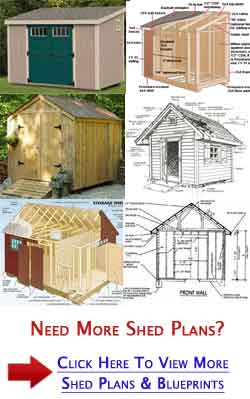
 www.mineralienatlas.de
www.mineralienatlas.de Introduction: Building Your Own Tuff Shed Alternative
Are you looking for extra storage space without the Tuff Shed price tag? Building your own shed can be a rewarding and cost-effective project. This guide provides step-by-step instructions to construct a durable and functional shed yourself. Remember to always prioritize safety and check local building codes before starting.
Step 1: Planning and Preparation
Permits: Research and obtain any necessary building permits from your local authorities. This can vary depending on the size and location of your shed. Design: Create a detailed plan for your shed, including dimensions, door and window placement, and roof style. Online resources and shed design software can be helpful. Materials List: Compile a comprehensive list of all the lumber, fasteners, roofing materials, siding, and other supplies you'll need. Calculate quantities carefully to minimize waste. Tools: Gather the necessary tools, including a circular saw, drill, level, square, measuring tape, hammer, safety glasses, and work gloves. Foundation: Determine the type of foundation you'll use (concrete slab, gravel pad, or wooden skid foundation) and prepare the site accordingly. Ensure the foundation is level and well-drained. Step 2: Building the Frame
Floor Frame: Construct the floor frame according to your plans using pressure-treated lumber. Use screws or nails to securely fasten the frame together. Wall Frames: Build the wall frames using 2x4 lumber (or larger, depending on your design). Include studs at regular intervals (typically 16 or 24 inches on center) and framing for doors and windows. Raising the Walls: Carefully raise each wall frame and secure it to the floor frame. Use temporary bracing to keep the walls plumb and square while you attach them. Top Plates: Install the top plates on top of the wall frames to connect them and provide a solid surface for the roof. Step 3: Constructing the Roof
Rafters or Trusses: Build or purchase rafters or trusses according to your roof design. Ensure they are properly spaced and securely attached to the top plates. Roof Sheathing: Cover the rafters or trusses with OSB or plywood sheathing. Stagger the seams and secure the sheathing with nails or screws. Roofing Material: Install your chosen roofing material (asphalt shingles, metal roofing, etc.) according to the manufacturer's instructions. Be sure to include underlayment for waterproofing. Step 4: Installing Siding and Trim
Siding: Attach the siding to the exterior walls, overlapping each piece according to the manufacturer's recommendations. Use appropriate fasteners for your chosen siding material (wood, vinyl, metal, etc.). Trim: Install trim around doors, windows, and corners to create a finished look and protect the edges of the siding. Step 5: Adding Doors and Windows
Door Installation: Install the door frame and hang the door, ensuring it swings freely and latches securely. Window Installation: Install the windows according to the manufacturer's instructions, sealing around the edges to prevent leaks. Step 6: Finishing Touches
Interior Finishing: Add any desired interior finishing, such as insulation, wall paneling, or shelving. Painting or Staining: Paint or stain the exterior of the shed to protect it from the elements and enhance its appearance. Cleanup: Clean up the construction site and dispose of any debris. Conclusion: Enjoy Your New Shed
Congratulations, you've successfully built your own shed! With careful planning and execution, you can create a durable and functional storage space that meets your needs and saves you money compared to purchasing a pre-built shed. Remember to perform regular maintenance to keep your shed in good condition for years to come.
Ash Tuff Rough Stone On Dark Background, Tuff, Ash Tuff, Stone Background Image And Wallpaper
 pngtree.com
pngtree.com Rock Types
 www.sandatlas.org
www.sandatlas.org Mineralatlas Lexikon
 www.mineralienatlas.de
www.mineralienatlas.de



 www.mineralienatlas.de
www.mineralienatlas.de  pngtree.com
pngtree.com  www.sandatlas.org
www.sandatlas.org  www.mineralienatlas.de
www.mineralienatlas.de



0 komentar:
Posting Komentar